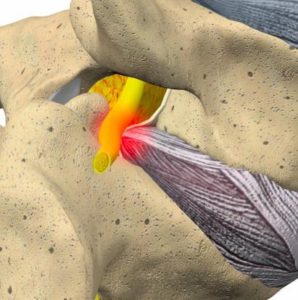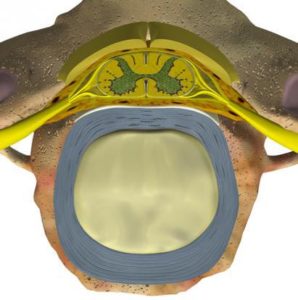Make an Appointment
Contact Us by Email
Sciatica and Herniated/Bulging Discs
Sciatica or Radiculopathy

Sciatica or Radiculopathy
Sciatica or Radiculopathy is a condition that exists due to a compressed nerve in the spine that may cause numbness, pain, tingling or weakness along the path of the nerve. Radiculopathy is most common in the lower back (lumbar radiculopathy) and in the neck (cervical radiculopathy), although it can occur in any art of the spine. Patients who experience heavy labor on a normal basis are far more prone to radiculopathy than patients who live a more sedentary lifestyle. Most people obtain sufficient relief of their symptoms of radiculopathy with conservative treatment. Such treatment may include anti-inflammatory medications or physical therapy, and avoiding activity that puts a strain on the neck or back. The majority of radiculopathy patients have a positive response to this conservative treatment, and symptoms normally improve within the first six weeks. Typical treatments involve traditional conservative care to include anti-inflammatory medications, muscle relaxants, physical therapy, and avoiding activity that puts a strain on the neck or back. When pharmacologic and traditional non-pharmacologic therapies do not help, we at Wasatch Pain Solutions employ minimally invasive procedures that help reduce or eliminate this pain all together. In rare cases, surgery may be necessary, however we at Wasatch Pain Solutions feel that most cases do not require these costly invasive and medically complex surgical interventions. However, when appropriate you can be comforted in knowing that we will help navigate you to the best spine surgeons to treat your condition.
Herniated or Bulging Discs

Herniated or Bulging Discs
There are many different terms used to describe spinal disc pathology and associated pain, such as “herniated disc”, “pinched nerve”, and “bulging discs”. A bulging disk extends outside the space it should normally occupy. The bulge typically affects a significant portion of the disk and the part of the disk that’s bulging is typically the tough outer layer of cartilage. Usually a bulging is considered part of the normal aging process of the disk and is common to see on an MRIs of people in almost every age group. In some cases, a bulging disk can be the cause of pain especially if there is noted tear in the disk or specific physical examination maneuvers elicit the pain symptom. A herniated disk, however, results when a crack in the tough outer layer of cartilage allows some of the softer inner cartilage to come out of the disk. The protrusion of inner cartilage in a herniated disk usually happens in one distinct area of the disk causing the disk to pinch or compress a spinal nerve. Herniated disks are also called ruptured disks or slipped disks. Although, bulging disks are more common, typically herniated disks are more likely to cause pain.
